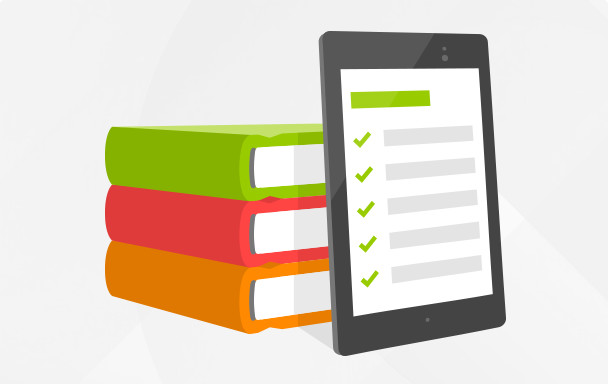
These guidelines and requirements help you develop great apps for students, which offer compelling content and an intuitive user experience on Android tablets.
You’ll also need to ensure that your apps comply with the terms of the Google Play for Education Addendum, Google Play Developer Program Policies, and Developer Distribution Agreement.
Basic Requirements
To participate, your apps must be designed for the K-12 market. The basic requirements that your apps must meet are:
-
Apps and the ads they contain must not collect personally identifiable information, other than user credentials or data required to operate and improve the app.
-
Apps must not use student data for purposes unrelated to its educational function.
-
Apps must have a content rating of "Everyone" or "Low Maturity" (apps with a "Medium Maturity" rating are allowed, if they have that rating solely because they allow communication between students).
-
App content, including ads displayed by the app, must be consistent with the app's maturity rating. The app must not display any "offensive" content, as described in the Google Play Developer Program Policies and content-rating guidelines.
-
Apps must comply with the Children’s Online Privacy Protection Act and all other applicable laws and regulations.
Monetizing and Ads
In-app purchase is currently not supported with Google Play for Education, so a student device will block any transactions. To avoid confusion, be sure to remove any in-app purchase buttons and related UI elements from your apps. We’re investigating additional purchase mechanisms to enable more flexible pricing models for developers and schools.
If your apps are priced In Google Play for Education, you must allow Google Play to offer teachers limited free trials before purchase (you provide this through business terms only, no development work is needed.)
You can only choose not to remove in-app purchasing from your apps where all content and services are sold through Google Play for Education using In-app Billing. If you choose not to remove In-app Billing features, ensure that:
-
Users can access your apps’ core functionality for a classroom setting without an in-app purchase.
-
In-app purchases are clearly identifiable in your UI.
-
You declare the use of in-app purchases at opt-in.
For each app that you publish, you can set a single price that applies to both Google Play and Google Play for Education. You can’t set a different price for a given app (based on a single package name) in Google Play for Education.
If your apps display ads, you should disable the display of ads if possible, or ensure that:
- Ads are not distracting for students or teachers (this includes Flash-based ads, video ads, and ads that flash or move)
- Interstitial ads are not served in the app
- Ad walls do not appear in the app UI
- Ads do not occupy a significant portion of the screen
- Ads content does not exceed the maturity rating of the app.
-
You declare the use of ads at opt-in.
Educational Value

Apps submitted to Google Play for Education will be evaluated by a third-party educator network, which will review them based on alignment with Common Core Standards and other educational considerations. This will help make your content more discoverable for teachers and administrators as they browse by grade level, subject, core curriculum, and other parameters.
Apps with highest educational value will have these characteristics:
-
Designed for use in K-12 classrooms.
-
Aligned with a common core standard or support common-core learning.
-
Simple, easy to use, and intuitive for the grade levels the apps are targeting. Apps are relatively easy to navigate without teacher guidance. Not distracting or overwhelming to students.
-
Enjoyable and interactive. Apps are engaging to students and lets them control their experience.
-
Versatile. Apps have features that make them useful for more than one classroom function or lesson throughout the school year.
-
Supports the "4Cs":
-
Creativity — Allows students to create in order to express understanding of the learning objectives, and try new approaches, innovation, and invention to get things done.
-
Critical thinking — Allows students to look at problems in a new way, linking learning across subjects and disciplines.
-
Collaboration — Allows students and (if appropriate) educators to work together to reach a goal.
-
Communication — Allows students to comprehend, critique and share thoughts, questions, ideas, and solutions.
-
As you design and develop your apps, make sure they offer high educational value by addressing as many of these characteristics as possible.
App Quality

Your apps should be designed to perform well and look great on Android tablets, and they should offer the best user experience possible.
High quality apps are engaging, intuitive, and offer compelling content. Google Play for Education will highlight high-quality apps for easy discovery in the store. Here are some recommendations for making your app easy for students and teachers to enjoy:
-
Meet the Core Quality Guidelines:
-
Follow Android Design Guidelines. Pay special attention to the sections on Action Bar, Navigation, and Pure Android.
-
Test your apps against the Core Quality Guidelines.
-
-
Meet the Tablet App Quality guidelines:
-
Follow our best practices for tablet app development.
-
Review the Tablet App Quality guidelines and blog post on designing for tablets.
- Check your Optimization Tips in the Developer Console (if you've already uploaded your apps.)
-
Strive for simplicity and highest usability for students:
-
Design your app so that teachers and students can use all the capabilities of your app without having to sign-in to multiple accounts and remember multiple passwords.
-
Every student or teacher using a Google Play for Education tablet will already be signed in with a Google account on the device. You can take advantage of that to provide a simple, seamless sign-in experience in your app. A recommended approach is to use Google OAuth 2 authorization through Google Play Services.
-
-
Test Environment
To test your app and assess it against the guidelines in this document, it's recommended that you set up a test environment that replicates the actual environment in which students and teachers will run your app.
Test conditions
Make sure to test your apps under conditions that simulate those of schools. For example, Google Play for Education lets administrators control or disable certain capabilities for students, so it's good to test your app with those capabilities disabled. Below are some conditions to test your apps for, to ensure best results in the Google Play for Education environment:
-
Android version — Test the apps on devices running Android 4.2. Google Play for Education devices will be running Android 4.2 or higher (API level 17+).
-
Proxy server — Test the apps in a network environment that uses proxies. Many schools use proxies.
-
No location services — Test the apps to make sure they work properly with location services disabled. Many schools will disable location services for student devices.
-
No In-app Billing — Test the apps to make sure they work properly without access to In-app Billing. In-app purchases are blocked on Google Play for Education devices.
-
No Bluetooth — Test the apps to make sure they work properly when Bluetooth is disabled. Many schools will disable Bluetooth on student devices.
-
No access to network — Test the app to make sure it works properly when the device cannot connect to the internet.